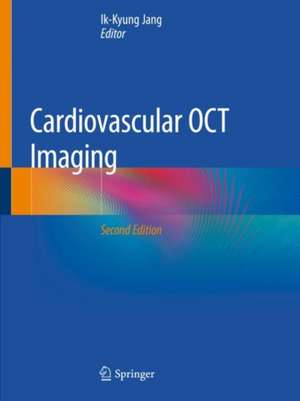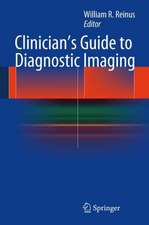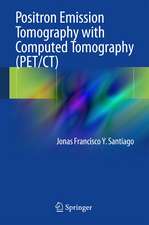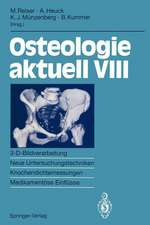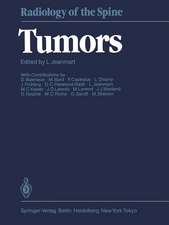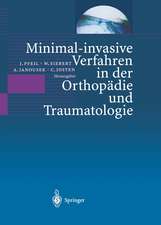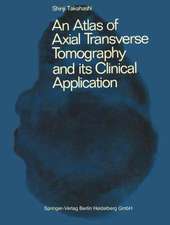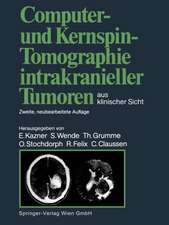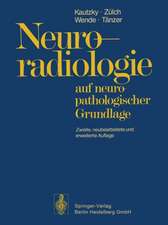Cardiovascular OCT Imaging
Editat de Ik-Kyung Jangen Limba Engleză Paperback – noi 2020
Cardiovascular OCT Imaging enables interventional cardiologists and cardiologists to quickly become both familiar and develop a detailed understanding of this technology to improve patient care and treatment outcome. It is a valuable reference for all practising and trainee medical professionals in cardiology, and in particular those who specialize in interventional cardiology.
| Toate formatele și edițiile | Preț | Express |
|---|---|---|
| Paperback (2) | 652.76 lei 39-44 zile | |
| Springer International Publishing – noi 2020 | 652.76 lei 39-44 zile | |
| Springer International Publishing – 30 apr 2017 | 779.39 lei 39-44 zile | |
| Hardback (2) | 914.15 lei 39-44 zile | |
| Springer – 3 dec 2014 | 1050.19 lei 3-5 săpt. | |
| Springer International Publishing – noi 2019 | 914.15 lei 39-44 zile |
Preț: 652.76 lei
Preț vechi: 687.12 lei
-5% Nou
Puncte Express: 979
Preț estimativ în valută:
124.90€ • 136.10$ • 105.25£
124.90€ • 136.10$ • 105.25£
Carte tipărită la comandă
Livrare economică 21-26 aprilie
Preluare comenzi: 021 569.72.76
Specificații
ISBN-13: 9783030257132
ISBN-10: 3030257134
Pagini: 198
Ilustrații: VII, 198 p. 155 illus., 148 illus. in color.
Dimensiuni: 210 x 279 mm
Ediția:2nd ed. 2020
Editura: Springer International Publishing
Colecția Springer
Locul publicării:Cham, Switzerland
ISBN-10: 3030257134
Pagini: 198
Ilustrații: VII, 198 p. 155 illus., 148 illus. in color.
Dimensiuni: 210 x 279 mm
Ediția:2nd ed. 2020
Editura: Springer International Publishing
Colecția Springer
Locul publicării:Cham, Switzerland
Cuprins
The Development and Physics of OCT.- Histology Validation of OCT Images.- Basic Interpretation Skills.- Intravascular OCT Imaging Artifacts.- Coronary plaque types: TCFA, healed plaque, calcified plaque.- Plaque Erosion.- How to use OCT to optimize PCI.- Post-PCI OCT findings and the clinical significance.- Very Late Stent Thrombosis (neoatherosclerosis).- Bioabsorbable Stent.- Detection of Vulnerable Plaque.- Multi-modality imaging.- Future Development.
Notă biografică
Ik-Kyung Jang, MD, PhD is Professor of Medicine at Harvard Medical School, Director of the Cardiology Laboratory for Integrative Physiology and Imaging (CLIPI) at Massachusetts General Hospital. Dr. Jang came to Massachusetts General Hospital in 1987 from Leuven University in Belgium, where he has completed his residency in medicine and fellowship in cardiology. He also successfully defended his doctorate thesis at the same university under the supervision of Professor Desire Collen. After his advanced fellowship in cardiology at MGH, he joined the staff and is currently working as a Physician and an interventional cardiologist in the Cardiology Division. His research interest has been acute coronary syndromes including acute myocardial infarction. His earlier research focused on pharmacology and physiology of thrombosis and thrombolysis including thrombin hypothesis and platelet inhibition. For the past twenty years he has pioneered the application of intravascular Optical Coherence Tomography (OCT) to patients to better characterize coronary plaques and to understand the mechanisms of plaque rupture. In 2010 Dr. Jang established an international OCT Registry, which has more than 2500 patients from 20 sites across 6 countries.
Textul de pe ultima copertă
This heavily revised second edition comprehensively reviews the use of optical coherence tomography (OCT) in cardiovascular practice. It provides detailed guidance on how to properly interpret OCT images and successfully utilise it in daily clinical practice Chapters cover the development and physics associated with OCT, relevant interpretation skills, OCT imaging artifacts, plaque erosion, bioabsorbable stent, the detection of vulnerable plaque, and the use of OCT imaging in unison with other modalities such as phase contrast imaging (PCI). Areas of potential future development are also covered
Cardiovascular OCT Imaging enables interventional cardiologists and cardiologists to quickly become both familiar and develop a detailed understanding of this technology to improve patient care and treatment outcome. It is a valuable reference for all practising and trainee medical professionals in cardiology, and in particular those who specialize in interventional cardiology.
Cardiovascular OCT Imaging enables interventional cardiologists and cardiologists to quickly become both familiar and develop a detailed understanding of this technology to improve patient care and treatment outcome. It is a valuable reference for all practising and trainee medical professionals in cardiology, and in particular those who specialize in interventional cardiology.
Caracteristici
Provides a concise summary of available data for and use of OCT in cardiovascular imaging Focuses on the use of the technique within cardiovascular practice Comprehensively covers the application of current data into clinical practice
Recenzii
“This
text
is
a
guide
to
cardiovascular
use
of
optical
coherence
tomography
(OCT).
…
The
book
contains
15
chapters
with
a
useful
index,
occupying
222
pages
and
including
numerous
representative
illustrations.
…
Although
this
volume
is
mainly
addressed
to
interventional
cardiologists,
providing
background
and
useful
hints,
we
recommend
this
fascinating
book
to
all
clinicians
interested
in
vascular
biology
to
improve
their
understanding
of
the
role
and
evolution
of
high-risk
plaque
in
the
pathogenesis
of
acute
coronary
syndrome.”
(Valeria
Gaudieri
and
Luigi
Mansi,
European
Journal
of
Nuclear
Medicine
and
Molecular
Imaging,
Vol.
43,
2016)
“This book provides an all-encompassing overview of cardiovascular OCT imaging - from a historical perspective to projections about future uses of this exciting technology. … The intended audience is interventional cardiologists and cardiovascular researchers. … This book does a great job of covering both the basic and the complex facets of OCT. The text is concise and well focused.” (Evan S. Jacobs, Doody's Book Reviews, May, 2015)
“This book provides an all-encompassing overview of cardiovascular OCT imaging - from a historical perspective to projections about future uses of this exciting technology. … The intended audience is interventional cardiologists and cardiovascular researchers. … This book does a great job of covering both the basic and the complex facets of OCT. The text is concise and well focused.” (Evan S. Jacobs, Doody's Book Reviews, May, 2015)
Descriere
Descriere de la o altă ediție sau format:
This book will be designed for busy interventional cardiologists to become quickly familiar with this emerging technology so that they can take advantage of its power improve patient care and outcome.
This book will be designed for busy interventional cardiologists to become quickly familiar with this emerging technology so that they can take advantage of its power improve patient care and outcome.
